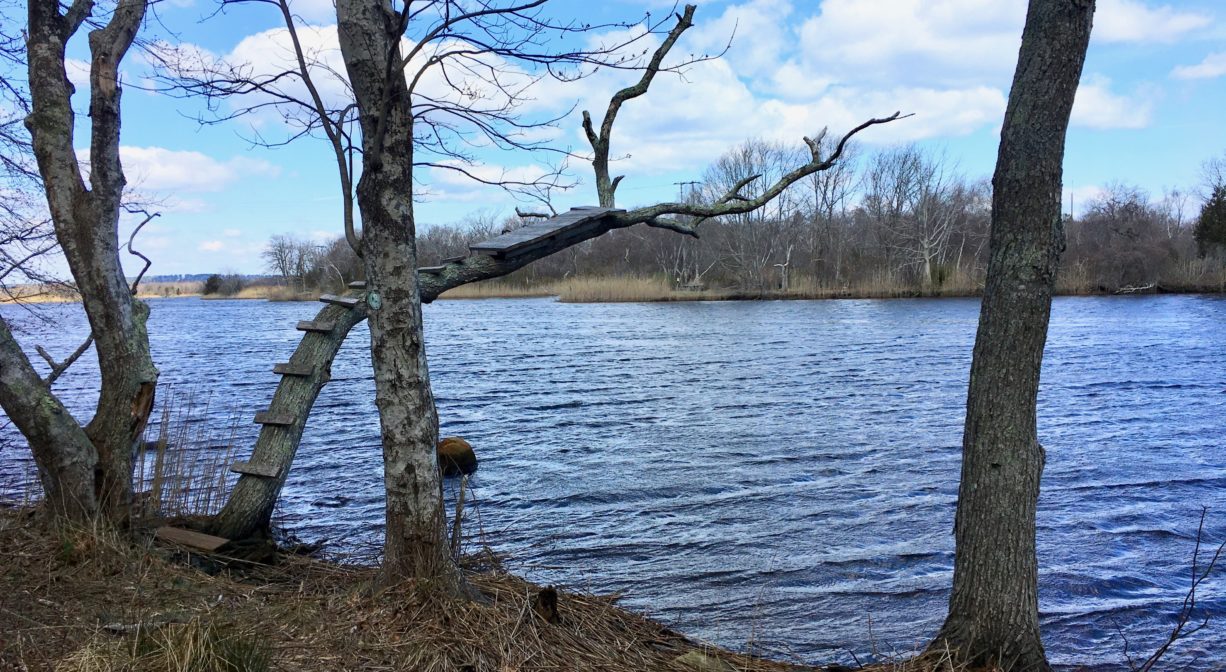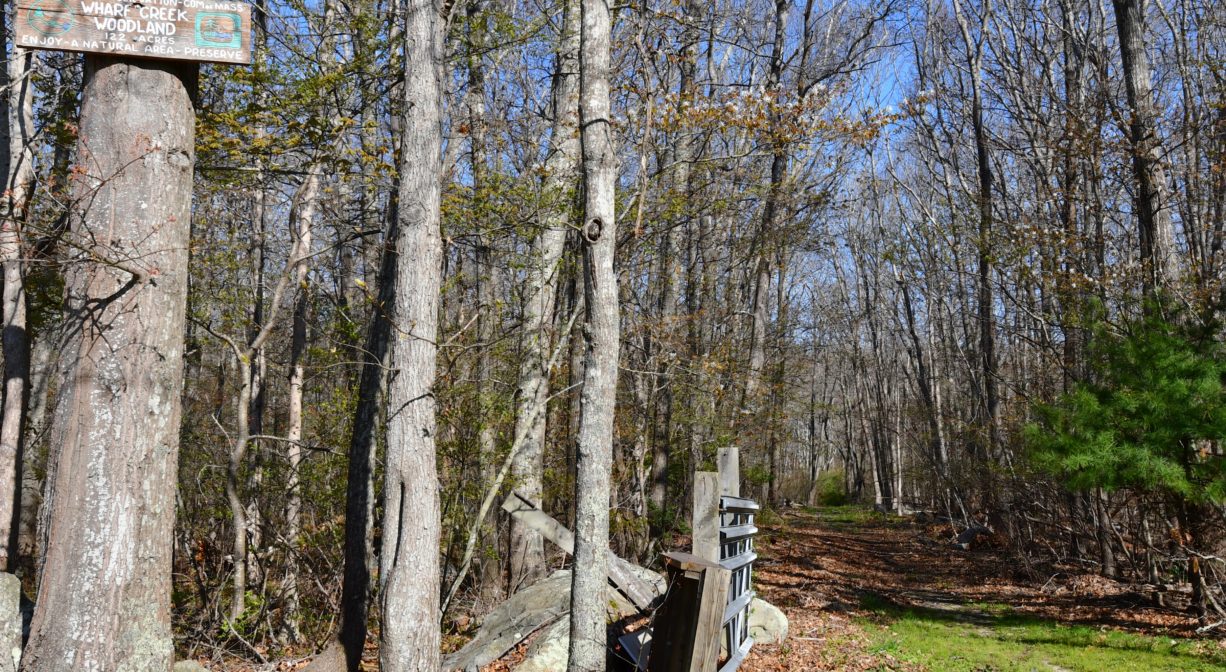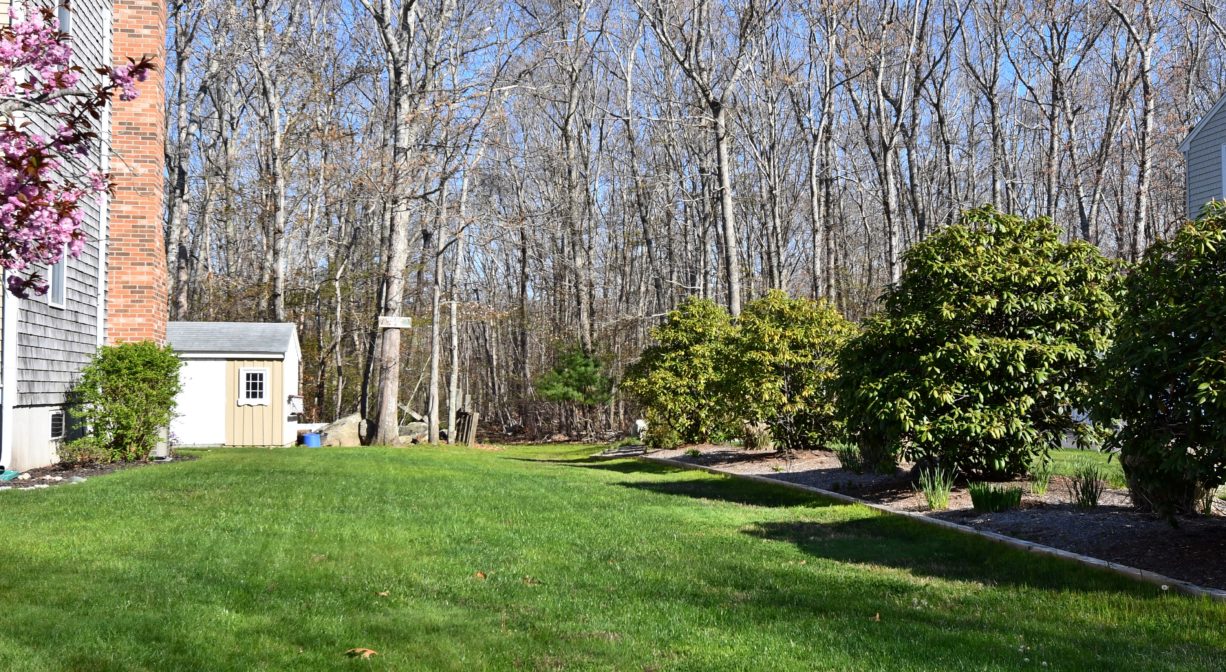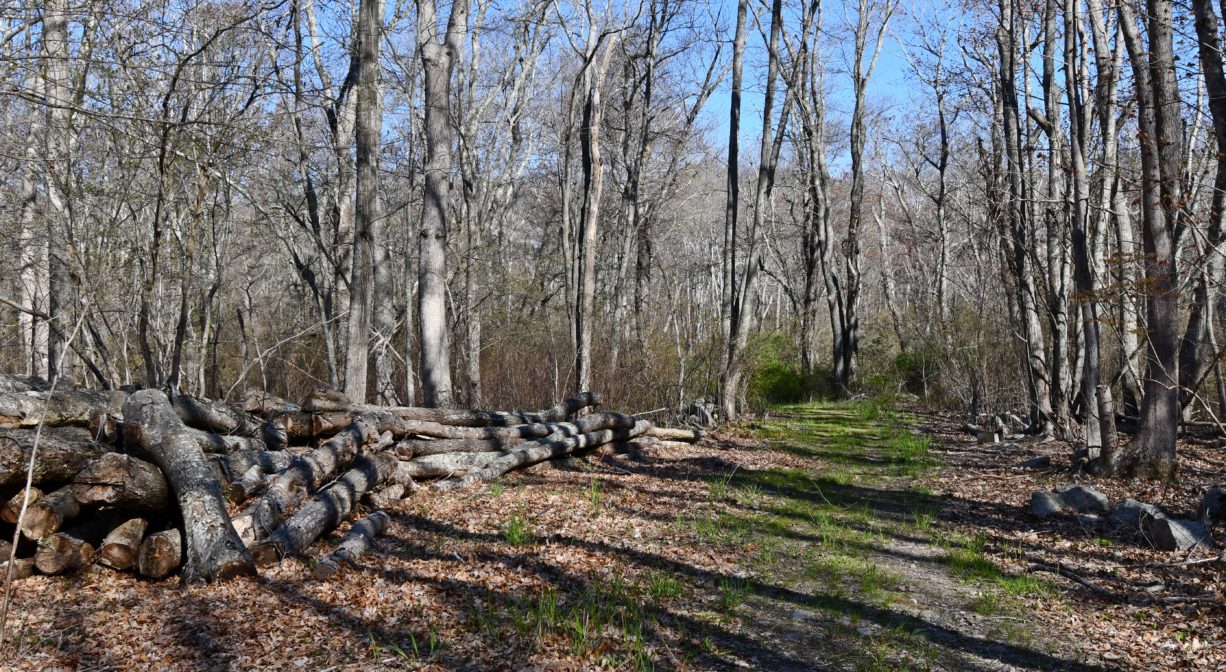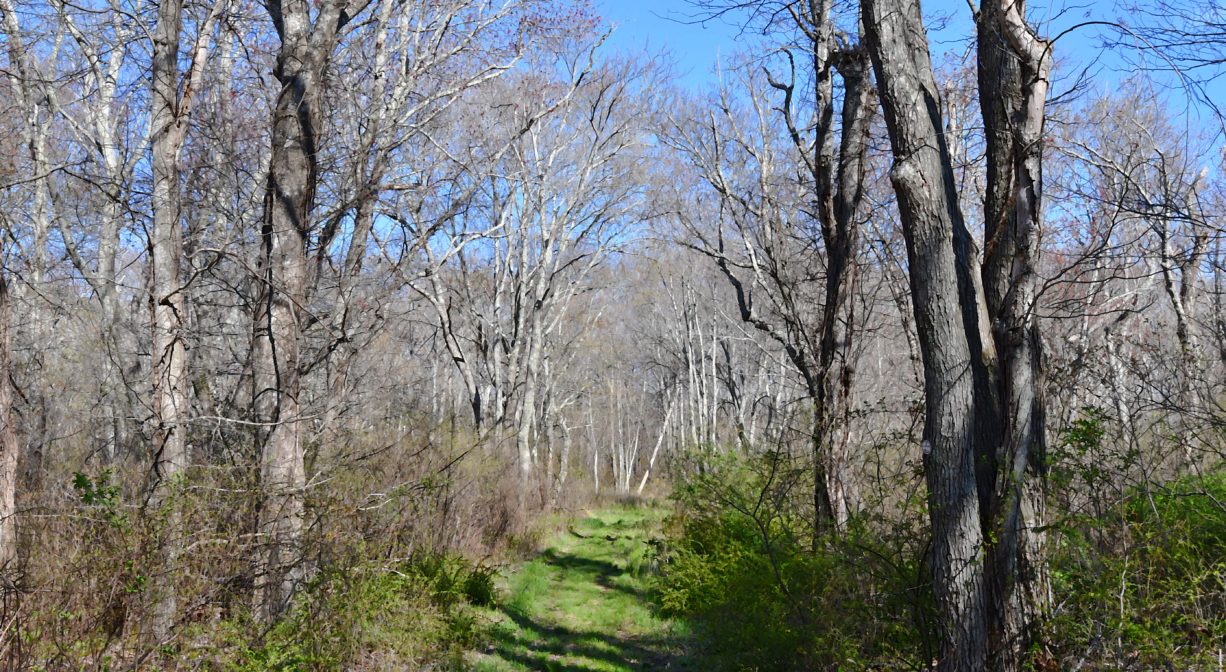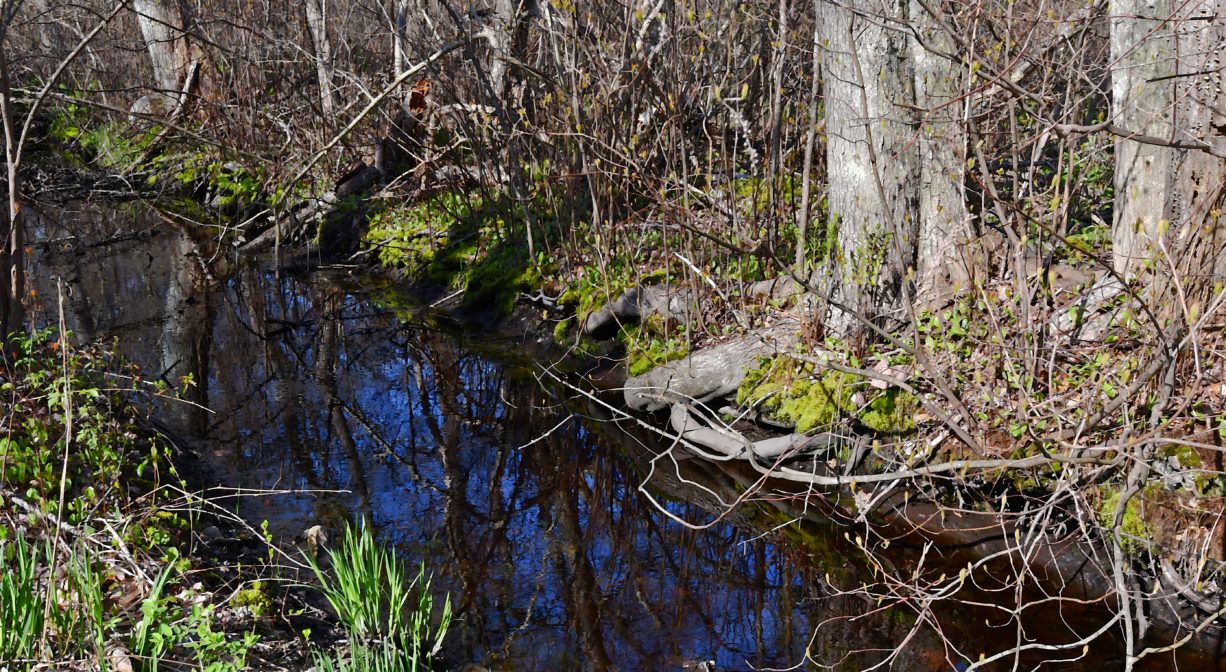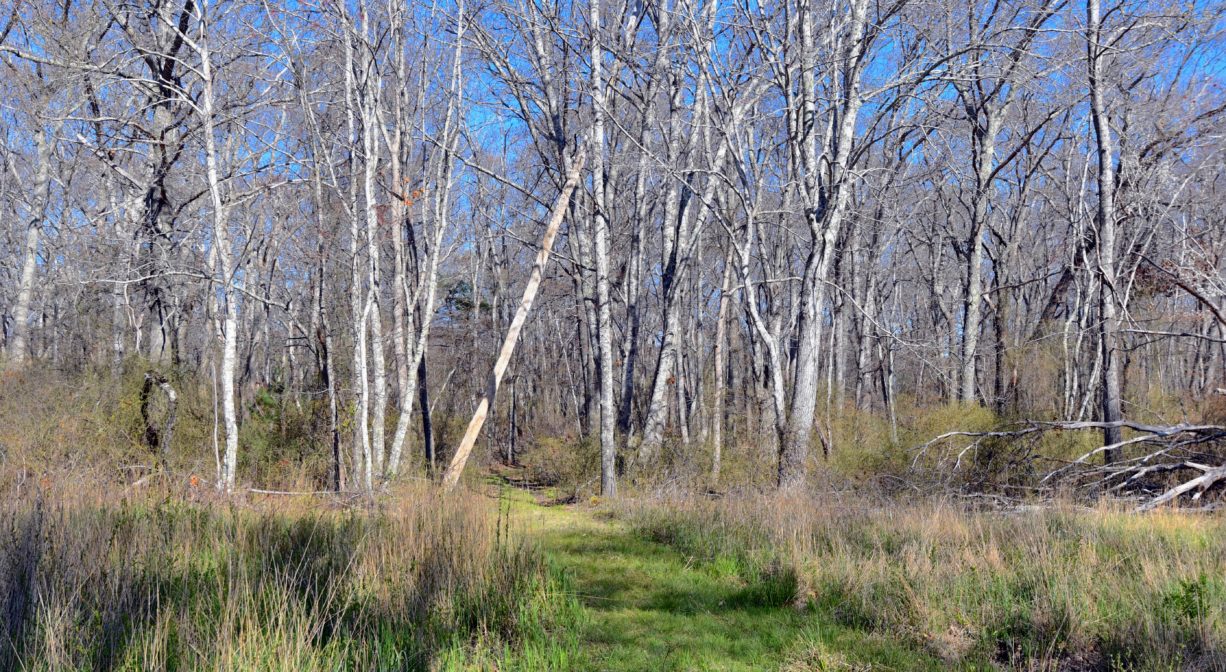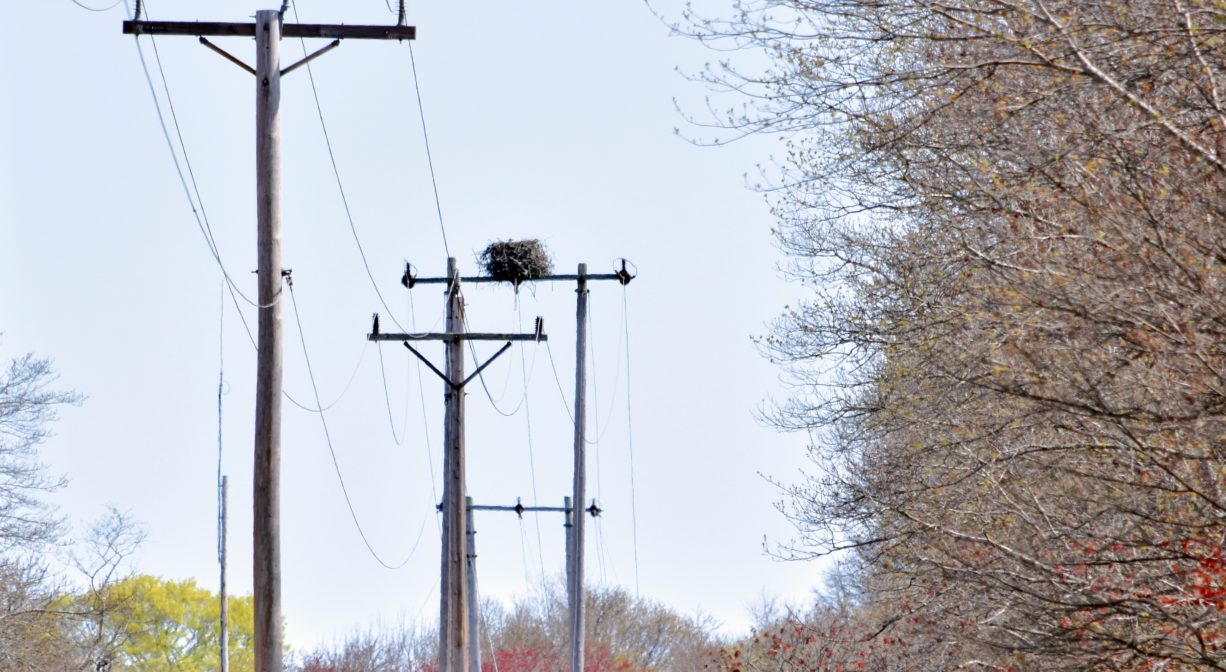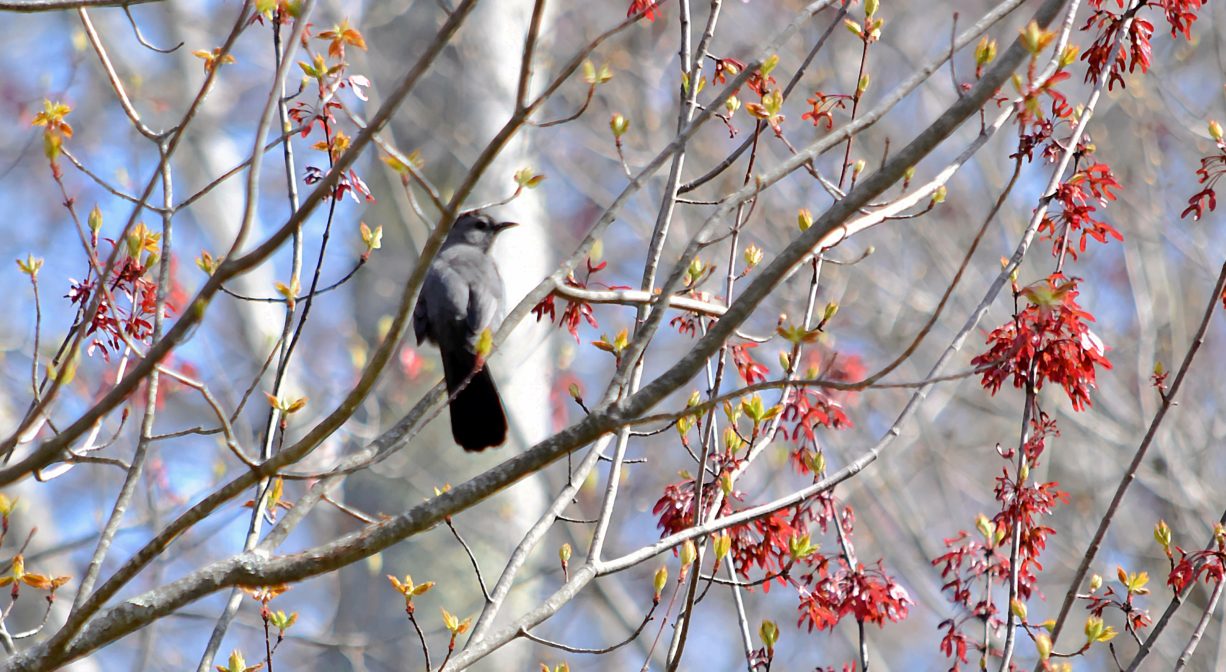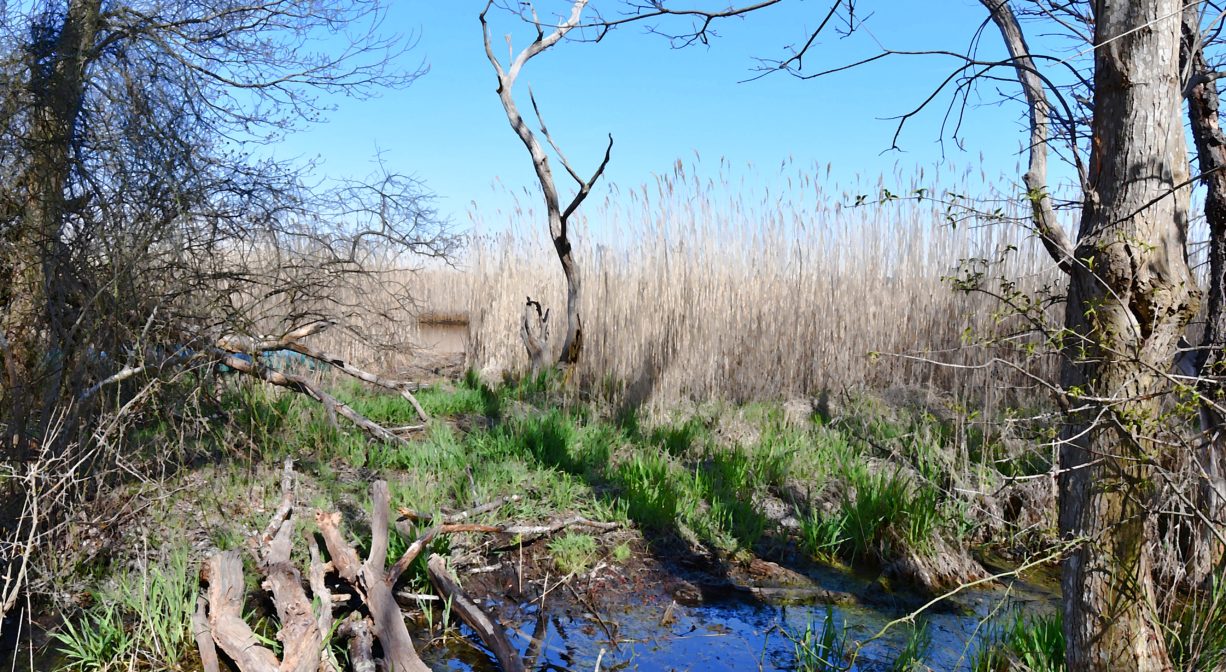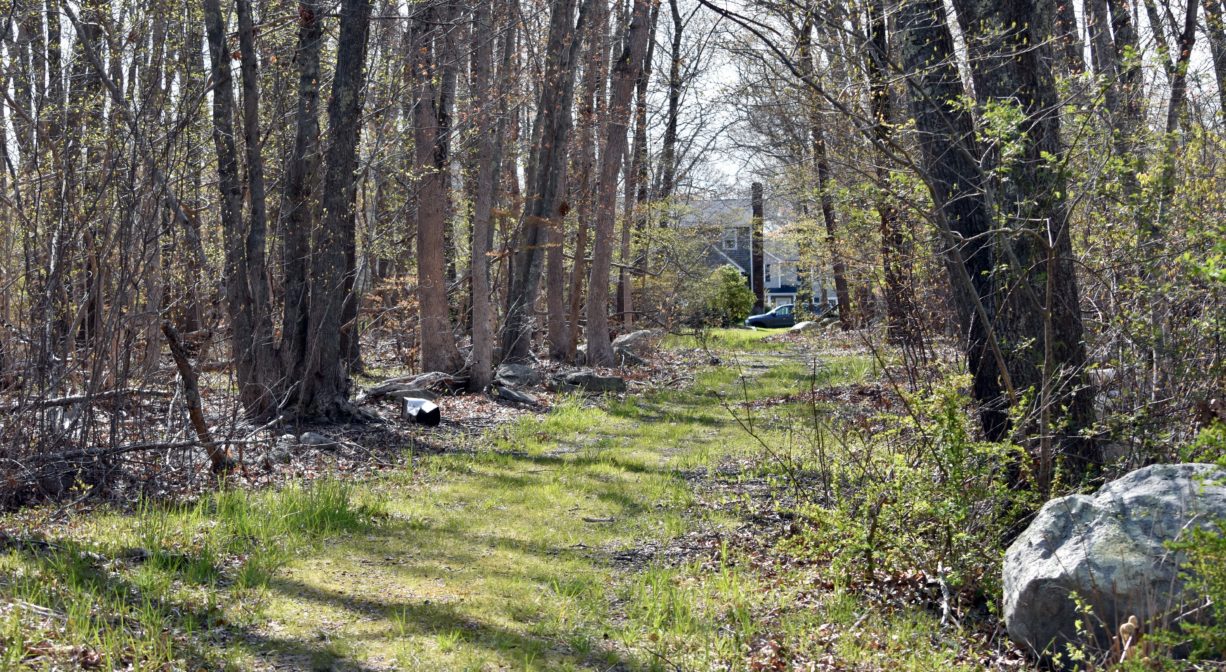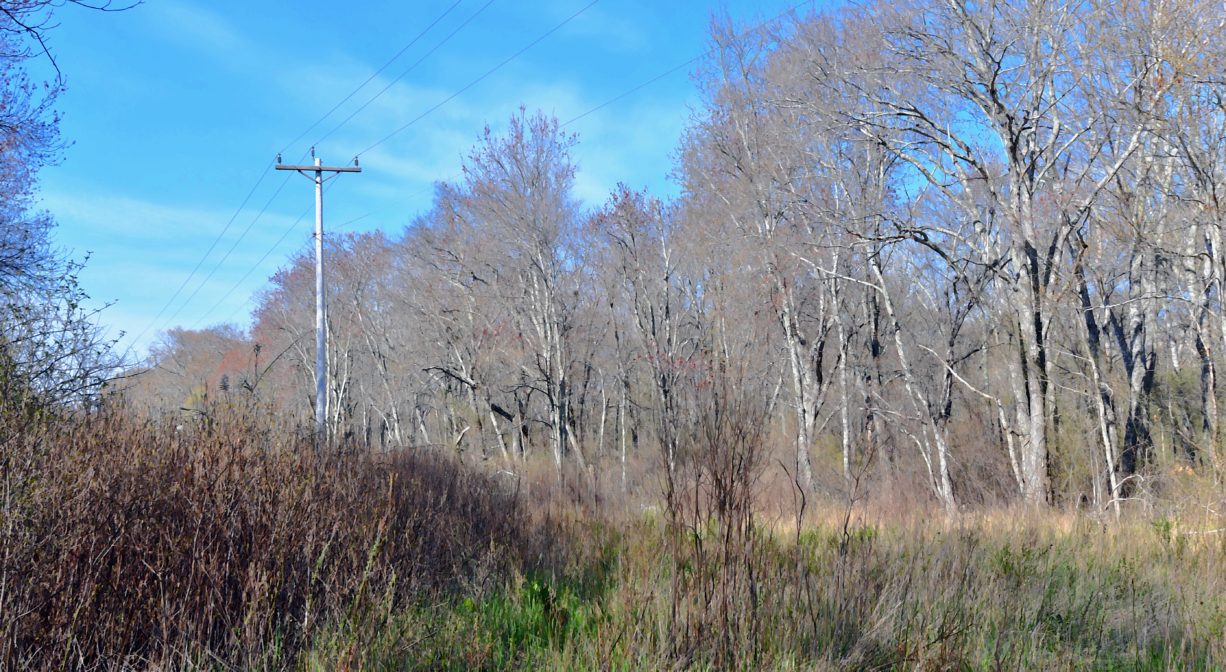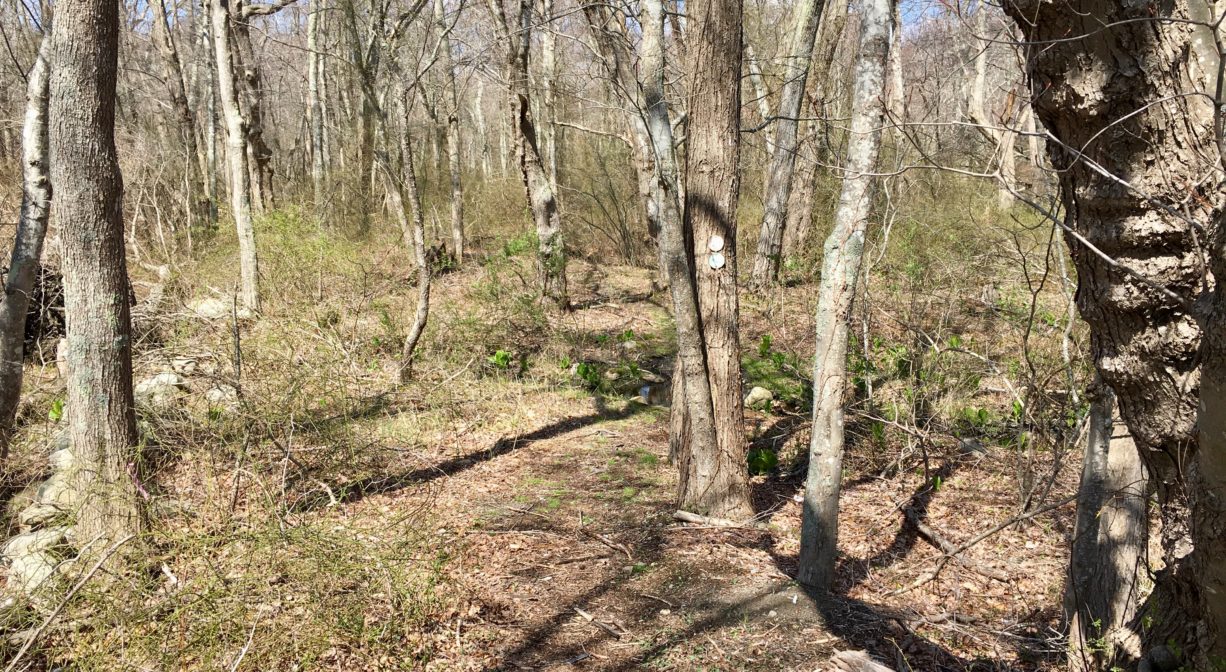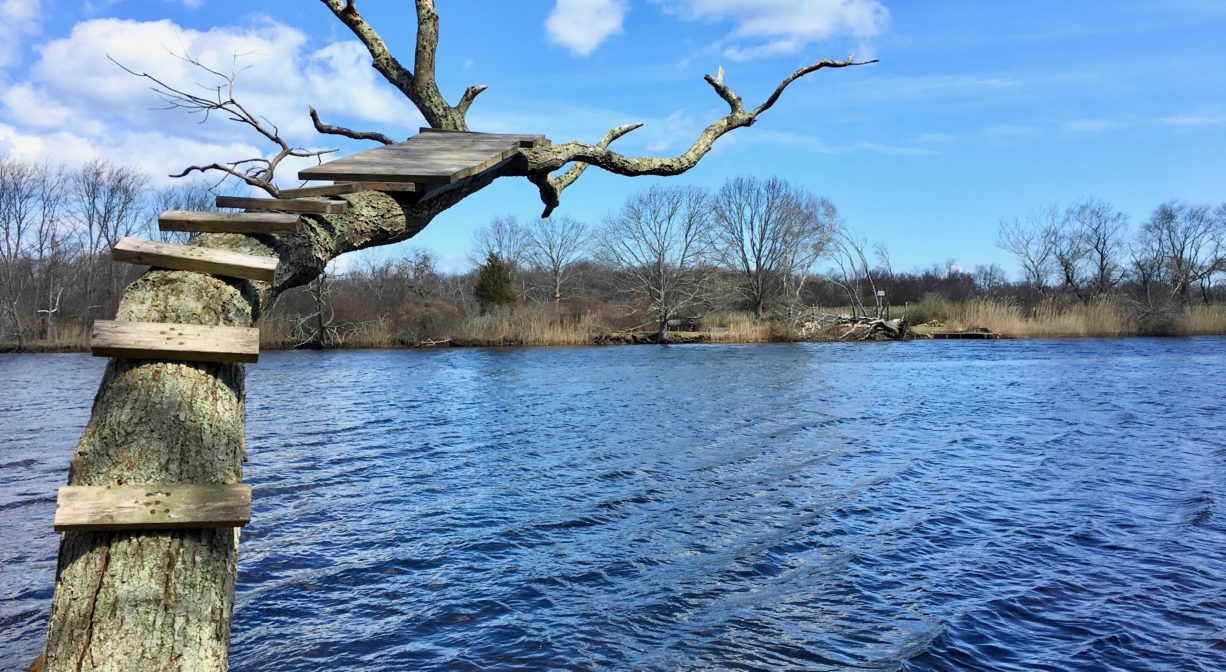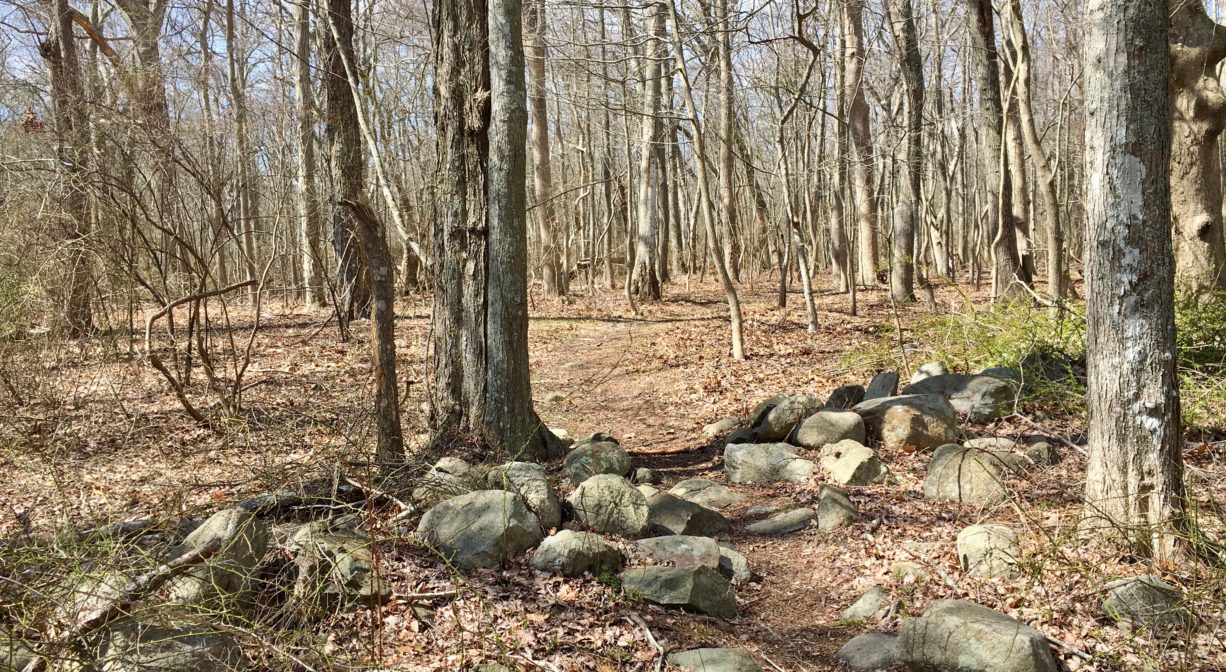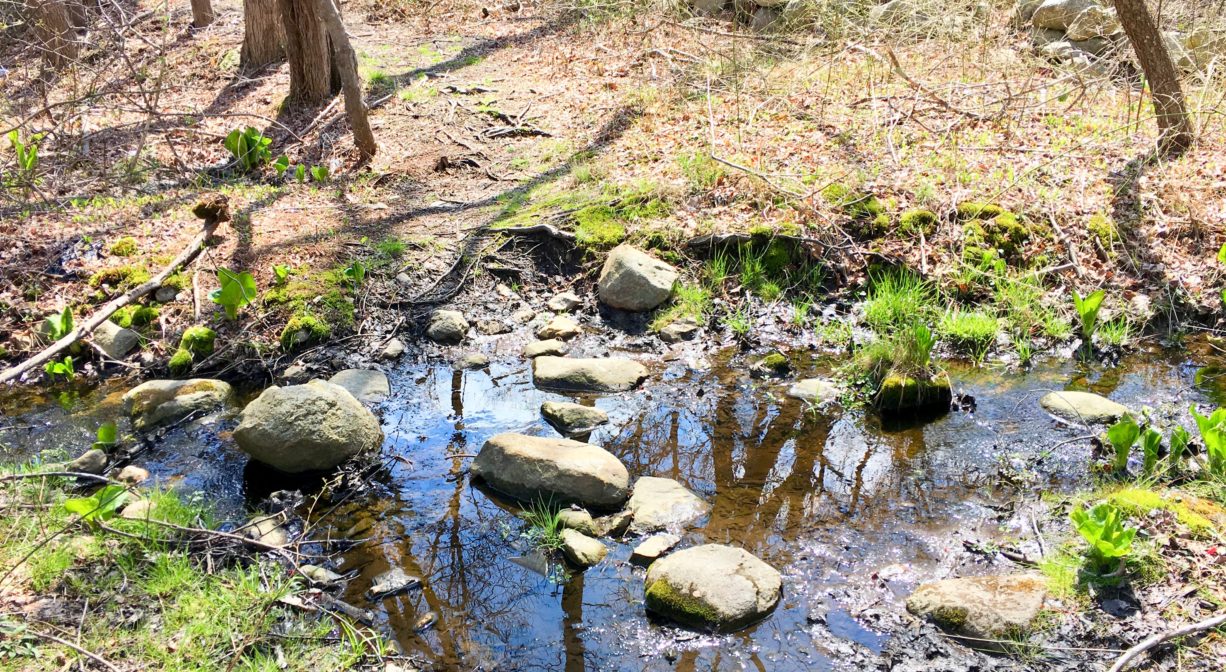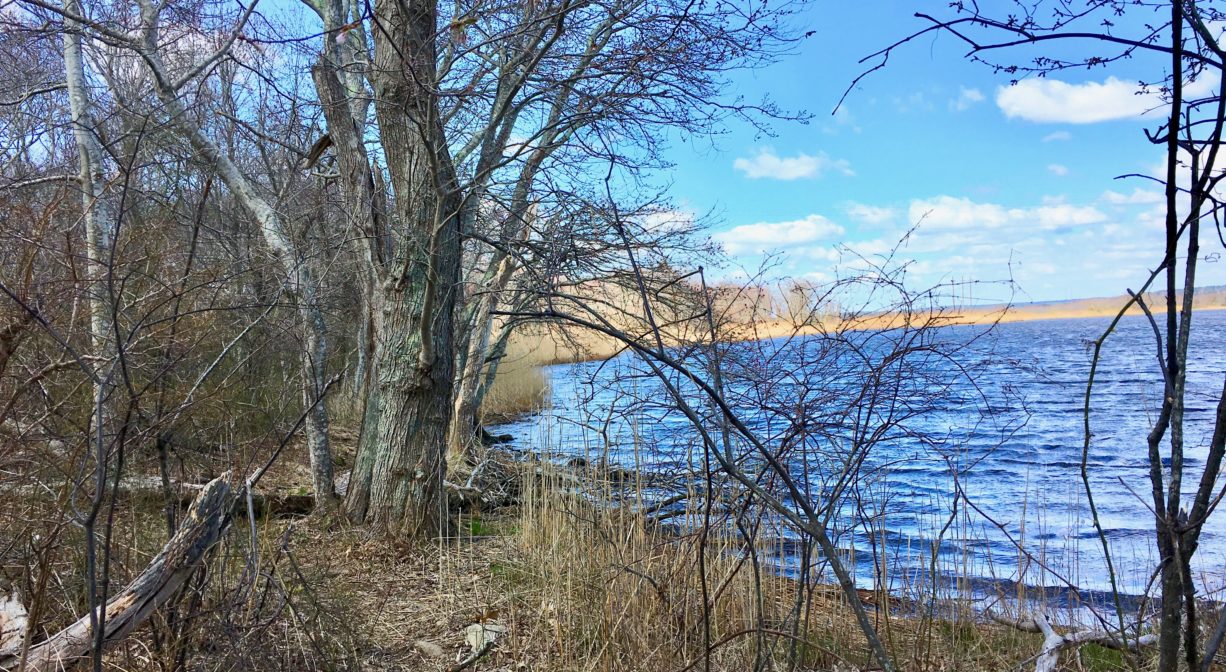259 Dyke Rd, Marshfield, MA 02050, USA
Marshfield Conservation: 781-834-5573
Owned By: Town of Marshfield
Marshfield’s 122-acre Wharf Creek Conservation area offers two trails through an open woodland with old stone walls and views of Wharf Creek and the Green Harbor River. This is an excellent spot for birders! Extend your visit by exploring the Harbor Walk and Peter Igo Park.
Hunting is not allowed at Wharf Creek Conservation Area, nor at any of Marshfield’s other conservation properties.
FISHING ADVISORY: It’s important to know that some of our freshwater fisheries are contaminated with mercury, PFAS and/or other concerning substances. The Massachusetts Department of Public Health maintains an online database with up-to-date advisories regarding fish consumption, sorted by location. We recommend you consult this valuable resource when planning a fishing excursion.
Features
Also known as Estes Woods, this property features a number of old stone walls within a relatively open woodland. The views Wharf Creek and the Green Harbor River are quite nice! A portion of this property was acquired by the town in 1978, with more to follow.
The original mouth of the Green Harbor River, which was located on the Marshfield/Duxbury line, more than a half mile south of the present mouth, was closed by a storm in 1806. The present mouth opened in 1810, probably via the combined effects of nature and manpower.
The opening of the new mouth dramatically increased the incoming tidal flow to the Green Harbor River. This was a boon to local fishermen, as it improved the harbor’s navigability. However the owners of farms bordering the river saw things differently. The increase in both the volume and the frequency of saltwater flooding to their lands was a big problem, as most crops don’t tolerate salt water.
So in 1871, a group of farmers petitioned the court to construct a dike, or tide gate, that would control the flow of saltwater upstream, and create more arable land. The dike was constructed in 1872, with the condition that “Should shoaling take place above the level of mean low water in the channel in consequence of dike construction, it was to be removed by the Marsh proprietors.” Shoaling did occur, and thus began the “Brant Rock Dike Feud.” Read all about it on our blog.
This land is within the region of the Wampanoag. To learn more about local Native American tribes, we encourage you to interact with their members. The Mashpee Wampanoag and the Herring Pond Wampanoag share information on their websites.
Trail Description
There are two out-and-back trails on this property. One begins at Dyke Road, across the street from Green Harbor Marina, and leads about 1/3 mile through the woods to the Green Harbor River. There is a small stream crossing at the beginning of the trail, and then it leads into a thicket of trees and underbrush before emerging at the edge of the river.
A second trail extends for about 0.4 mile from Calypso Lane to Wharf Creek. The trailhead is located between #57 and #63 Calypso Lane. Follow the row of trees to the trailhead, where there is a gate and a trail sign. Please be mindful of private property! A wide cart path enters the woods, crosses a small stream, and leads past a power easement, before narrowing and continuing through the woods to the edge of the marsh and Wharf Creek.
Note: While the two trails used to connect, they currently do not. The Dyke Road trail is narrow but flat. The Calypso Lane trail is also flat, and somewhat wider. Some sections of the trails are wet and/or overgrown.
Extend your visit by exploring the Harbor Walk, which can be accessed from the Dyke Road trailhead. Cross the street and follow the sidewalk toward the Green Harbor River. The Harbor Walk continues as an ADA-compliant pathway across the Brant Rock Dike, along Route 139 and the edge of the marsh, past Peter Igo Park and a parking lot for Brant Rock Beach, to Harbor Park and the Marshfield Town Pier. Next to the Water Treatment Plant, there is a spur trail to the Brant Rock Esplanade. The total length is about 1 mile.
Habitats and Wildlife
Forests of oak, elm, maple, and silver birch, with plenty of fern, greenbrier, native chokeberry and invasive bittersweet. Watch out for poison ivy! The thicket along the Dyke Road trail is an ideal place to observe birds. In the spring, it tends to be very popular among warblers. There are also some wetlands on this property. Once you arrive at Wharf Creek and/or the Green Harbor River, watch for the osprey that nest up above (look for the nests on top of the utility poles). You may also spot a tern.
This property is located where Wharf Creek flows into the Green Harbor River. The Green Harbor River finds its source in springs and ponds in Duxbury. It twists and turns through Marshfield via Red Gold Farm, the Green Harbor Golf Club, the Daniel Webster Wildlife Sanctuary, property owned by the Marshfield Municipal Airport, and Peter Igo Park. Just downstream of the Dyke Road bridge (and dike) it flows into the Atlantic Ocean at Green Harbor.
Historic Site: No
Park: No
Beach: No
Boat Launch: No
Lifeguards: No
Size: 122 acres
Hours: Dawn to Dusk
Parking: Pedestrian access from Dyke Road, across the street from Green Harbor Marina. Additional pedestrian access from Calypso Lane, between #57 and #63. For the Dyke Road entrance, we recommend parking at Peter Igo Park and following the Harbor Walk (sidewalk) across the Green Harbor River to the trailhead.
Cost: Free
Trail Difficulty: Easy
Facilities:
Geocache location. Bench.
Dogs: Dogs must remain on leash. Please clean up after your pet!
Boat Ramp: No
ADA Access: No
Scenic Views: Yes
Waterbody/Watershed: Wharf Creek (Green Harbor River watershed)


